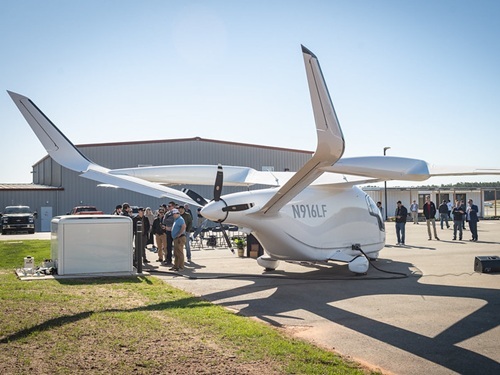Colorado is embarking on an ambitious program to have 940,000 electric vehicles (EVs) registered by 2030, and the Colorado Department of Transportation is tasked with helping to lead the charge within the department and throughout the state.
The Colorado Electric Vehicle Plan 2020 also looks beyond 2030, setting a “long-term goal of 100 percent of light-duty vehicles being electric and 100% of medium- and heavy-duty vehicles being zero emission.” The plan taps Colorado DOT as one of the main players to develop the state’s strategy of reducing greenhouse gas emissions by replacing internal combustion engine (ICE) vehicles with EVs.
According to Sophie Shulman, the agency’s chief of innovative mobility, the Colorado DOT’s role in the state’s EV plan is two-fold. First, it must begin replacing its current fleet of ICE vehicles to zero emission vehicles (ZEV) whenever practical. The second – and bigger – task for the department is to work on several fronts to increase ZEV use among private, commercial, and transit entities and to support further growth of the state’s EV charging infrastructure.
The plan’s goals “complement and build upon our existing work in the field of vehicle electrification, such as our management of transit electrification grants, our planning coordination through the public-private Freight Advisory Council and our support of charging infrastructure and vehicle grant programs,” Shulman said.
While Colorado’s 28,722 EVs on the road represent a 25 percent increase from August 2019, the state will have to consistently post a 40 percent annual increase to hit the 940,000 EV mark by 2030. In addition, the Colorado DOT and other agencies have until 2021 to “establish timelines, identify strategies and dedicate sufficient resources” to convert the entire state transit fleet to an all-ZEV fleet by 2050, with at least 1,000 ZEV transit vehicles on the road by 2030.
An added challenge is that the electrification of medium-duty and heavy-duty vehicles, which make up the vast majority of transit vehicles, has lagged behind the development of passenger EVs for a host of reasons, including battery issues, range problems and cost barriers.
However, a recent report from Atlas Public Policy determined that purchasing such EV vehicles can be cost-effective if low-cost charging and vehicle incentives remain in play.
Developing strategies and plans for EV infrastructure and purchasing incentives also are on Colorado DOT’s to-do list as well, noted Shulman. She explained that the agency has “a long history” of supporting EV incentive programs and charging projects, including the agency’s work on REV West, a multi-state effort to build an EV charging network through the Intermountain West states. The EV plans are “ambitious and will push us further than ever before,” Shulman added. “We are excited by this challenge and eager to partner with industry, state, and local agencies and Coloradans to make the plan’s vision a reality.”




